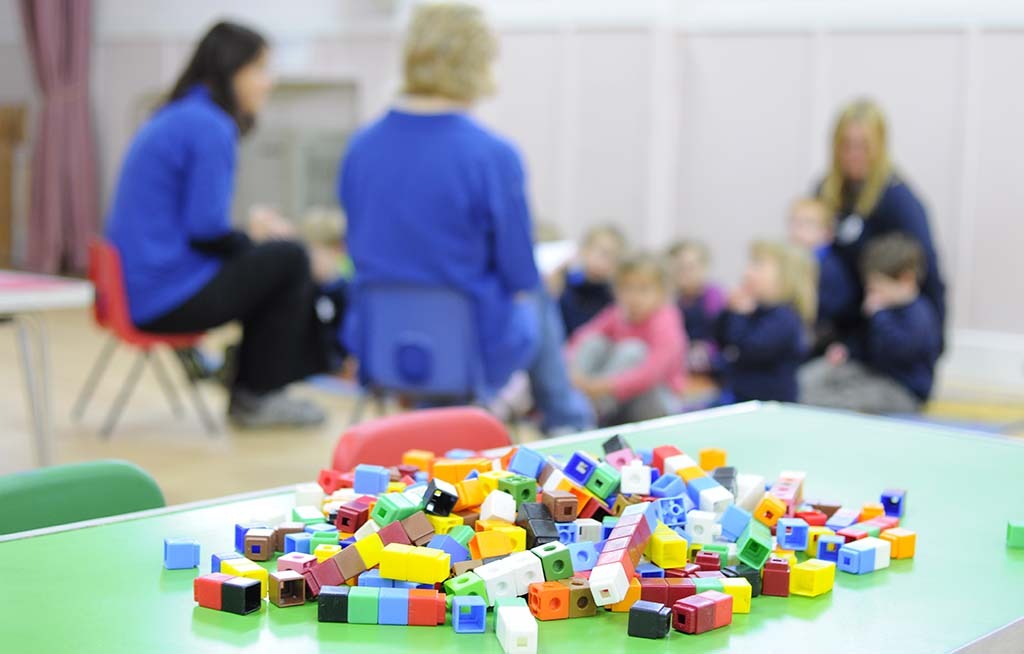Early childhood is of critical importance, not only in and of itself but as a pathway to later development. The environments experienced and skills developed during this period are things over which children have little control, but they affect the rest of their lives. The process of child development is complex, but understanding it is a crucial part of addressing social and economic inequality.
A panellist’s introduction, by Orazio Attanasio
A chapter written by Sarah Cattan, Emla Fitzsimons, Alissa Goodman, Angus Phimister, George Ploubidis and Jasmin Wertz analyses these issues, and brings to bear new UK evidence on recent trends in early child environments and skills. This is complemented by three commentaries. Those by Essi Viding and Eamon McCrory and by Sophie von Stumm provide further analyses of the process of child development, including the role of genetics, while a third commentary by Matthias Doepke and Fabrizio Zilibotti focuses on the role of parenting. This material is complementary to the study on families by Kathleen Kiernan, Sam Crossman and Angus Phimister, which we recommend be read in conjunction with these pieces.
Cattan et al. begin by documenting the key facts about socio-economic differences in children’s development and the environments they grow up in, the relationships between those skills and environments, and the importance of these early experiences in shaping later life. To do this they draw on rich sources of longitudinal data following birth cohorts of children at regular intervals – an area in which the UK is a leader in terms of data resources. The two main sources for the initial analysis are the Millennium Cohort Study (MCS), which follows people born in around the year 2000, and the British Cohort Study, which follows a group of people born in 1970, and which hence now contains detailed information not only on their childhoods but also on their adult lives to date. Many striking patterns emerge from this:
• Children’s skills develop highly unequally in the early years, with differences strongly related to family background. For example, at age 3, children raised in the highest-income fifth of families are more than three times as likely to have high cognitive ability (placing them in the top fifth of the distribution) as children from families in the lowest-income fifth. Similarly large gaps exist for social and emotional skills.
• Large differences in the material, emotional and educational aspects of the home environment are key to explaining many of the inequalities in children’s early skills. For example, mothers in the lowest-income fifth of families are eleven times more likely to experience psychological distress, when their child is 3, than mothers in the top-income fifth; and 42% of parents on the lowest incomes read to their child daily at age 3, compared to 76% of parents with the highest incomes.
• The early years shape later life outcomes to a remarkable degree. As adults, the children of mothers who left school at 16 or over earn about a third more than the children of other mothers on average. Half of that earnings gap can be explained by the child’s early development, and features of the home environment, up to age 5. The early environment appears to shape adult outcomes above and beyond its impacts on the formation of early skills.
We cannot know for sure the extent to which the associations between features of early childhood and later life outcomes will hold up for more recent cohorts. But we can examine how early childhood inequalities are evolving for those born more recently, motivated by the fact that we know these to have been so important for the rest of the lives of generations before them. Hence, Cattan et al. compare early childhood inequalities as measured in the MCS, for children born between 2000 and 2002, and in a more recent data set, the SEED survey, which contains comparable information on children born a decade later in 2010–12. This paints a somewhat challenging picture:
• Inequalities in early cognitive, social and emotional development have changed little between children born in the early 2000s and those born in the early 2010s. This applies to gaps between the children of high- and low-educated mothers, and between children living in more and less deprived areas.
• Trends in the home environments that children grow up in are mixed. On average, there have been improvements in some aspects of early home environments, such as the frequency with which parents read to their children, but deteriorations in other aspects of the home environment, such as a rising prevalence of maternal mental health problems. Differences in these environmental factors between richer and poorer families remain stubbornly high.
• The lack of change in gaps in early development comes despite unprecedented public investments in the early years over the past 20 years and evidence that targeted policy interventions – in particular Sure Start – had positive impacts on the poorest families and children. The persistence of the inequalities likely reflects the complex and multiple factors affecting child development, and the fact that much of the increased public spending has been on childcare places and childcare subsidies for the over-2s, while the primary determinants of early development are in the family home and operate from the very earliest stages of life.
The chapter contains a comprehensive overview of the international evidence on the impacts of early policy interventions on child development and the home environment. It is clear from this that policy can help to improve outcomes ranging from the strength of parent–child relationships to health-related behaviours to measures of school readiness. The England Sure Start programme, introduced in the late 1990s, is an example of the kind of intervention that is often found to have positive effects on families and children – a holistic set of services targeted at families in disadvantaged areas which offered a one-stop shop for information and advice on health, parenting, money, training and employment as well as play sessions and childcare. This programme has now been shown to have improved children’s health right up to adolescence, with ongoing research examining other outcomes – although unfortunately this evidence came only after austerity meant the closure of many Sure Start centres after 2010.
Zooming out from Sure Start and surveying UK public spending on the early years more generally, the authors argue that its impacts are likely to have been limited by the fact that much of the spending has been focused on increased childcare places and subsidies. Arguably, the goals of this have been skewed more towards increasing parental employment than furthering child development – particularly given that the additional childcare spending has generally had a clearer link to quantity of childcare than to quality. The authors argue that a more powerful set of early years policies would contain more focus on support and interventions that can affect what happens within the family home – where so many of the key determinants of child development are found – and more focus on the very youngest children.
A novel feature of the chapter is its ability to include genetic data collected from the children of the MCS within the analysis. Constructing polygenic scores from these data – summary measures which estimate a person’s genetic predisposition for certain traits, such as educational success – the authors document correlations between these genetic markers and many important aspects of the family and home environment. This adds further to the evidence that multiple advantages and disadvantages can reinforce one another, and that we need to understand how they interact if we are to understand the process of child development. Both the Viding and McCrory commentary and the contribution from von Stumm also address genetics, and stress that genetic factors are important but not deterministic. Instead, the genetic background of a child interacts with the environment to determine, in a complex way, the outcomes for children. Von Stumm emphasises the importance of refining our understanding of the developmental process if we are to develop appropriately targeted policies, advocating the usefulness of a framework known as the ‘developmental cascade model’ in which children’s many interactions with their environment have a cumulative impact on their development, and result in spreading effects across developmental levels and different domains of development. Viding and McCrory argue along similar lines and stress the importance that certain negative events (such as abuse or trauma) can have in affecting the subsequent course of child development.
The commentary by Doepke and Zilibotti focuses on the role of parenting. They provide empirical evidence that parenting styles, while correlated with many other influences on children, are likely to play a distinct role in determining children’s development. They call for more policy attention on this driver of development and a deeper understanding of what drives parents to adopt particular styles and behaviours. This is not a case of distinguishing simplistically or judgementally between ‘good’ and ‘bad’ parents. Rather, the authors posit that parental behaviours respond to the resources and information that they have, both of which are, at least in part, shaped by countries’ wider economic, social and institutional environments. As supportive evidence of this, they show that variation in parenting styles across countries aligns with key features of countries’ economic and institutional environments. The central point here – that parenting styles are themselves a function of the wider environment – points to the importance of designing interventions to support families and parents that are cognisant of the particular economic, cultural, social and institutional contexts in which they are implemented.
















